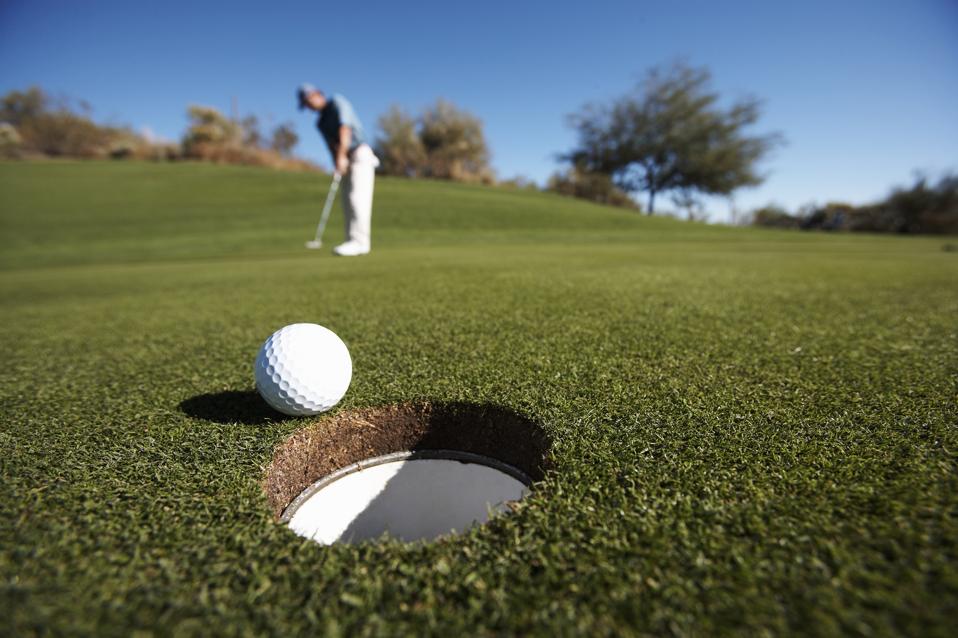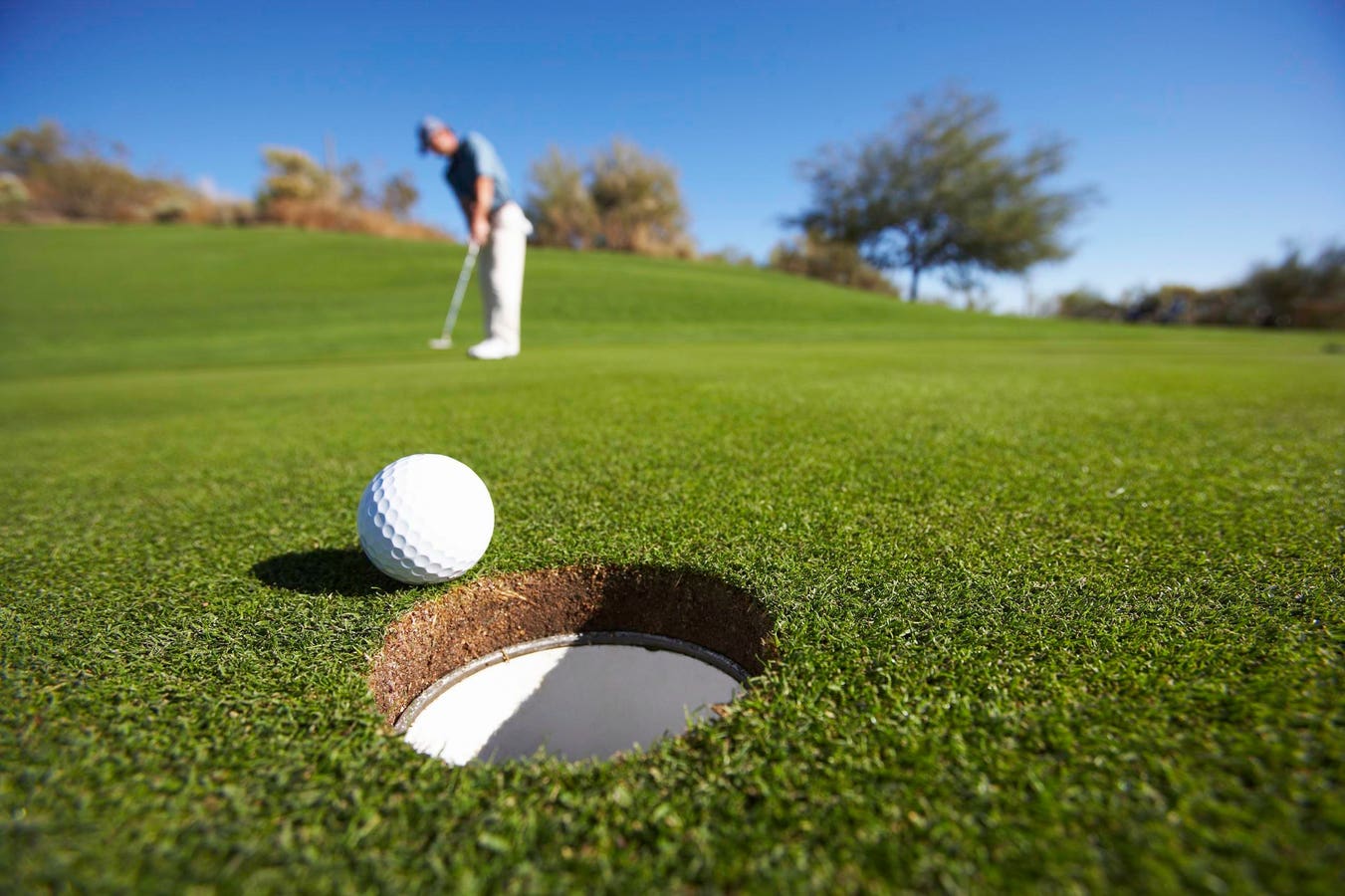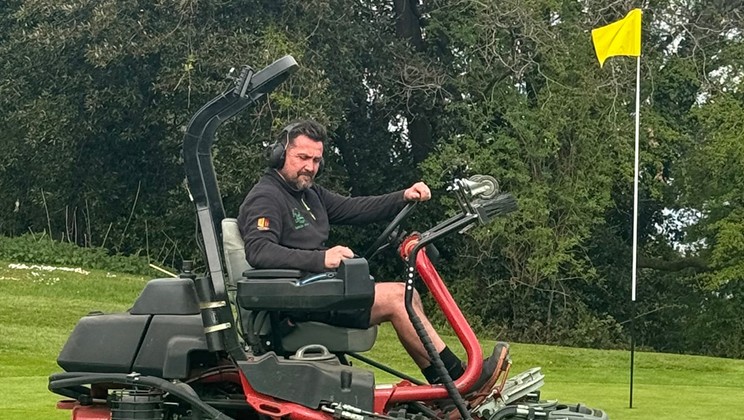
They say you “Drive for show and putt for dough,” but both are affected by what golf ball you choose to play.
getty
Golf is great game, but it is also a cruel game. I played with a friend the other day who is a decent player and has been golfing for 40-plus years and told me he went our recently and suddenly could no longer hit a decent iron shot. From one day to the next, with no rhyme or reason. That is classic golf. That is also why, with all the challenges involved, there is only one golf ball you should be playing.
Golf Is Hard
We have all been though the ups and downs, the “ah-hah” moments where we have finally “figured it all out,” only to have that new revelation stop working after a wondrous round. Or gotten a new putter or diver that was “can’t miss”—until it started missing. For most amateurs, golf is a game of two steps forward and one step back, or worse, for way too many recreational players, one step forward and one step back with no long term progress at all.
Consistency Is The Key
In recent years, through a combination of effort and expert assistance, I have finally begun to solidly improve my game, which is better than ever (but still nothing to brag about) and what I have realized—with the advice of some of the world’s best golf teachers such as former PGA Tour player Blake Adams, who runs the phenomenal golf academy at Reynolds Lake Oconee resort in Georgia—is that consistency is they key overlooked by many amateurs. That sounds really obvious, everyone wants a consistent swing, but I’m not talking about the swing. I’m talking about all the other things that are much easier to control, such as setup, aim and equipment.
Many golfers focus on their drives, and the ball you play will affect how good a driver you are.
getty
I have played with a lot of amateurs of greatly varied abilities, hundreds and hundred of them, all over the world, and I’m always shocked by how inconsistently many players tee up their ball just for driver from one hole to the next, in terms of height and/or ball position in their stance. I’ve seen someone hit driver next to their front big toe on one swing and in the dead middle of their stance the next. Same with irons. Alignment is another radically inconsistent part of many golfers’ games. Golf is hard, even if you do everything right, but we make the job much harder when we change things from one swing to the next. As a result, in addition to trying to make good swing, we need to constantly compensate—consciously or unconsciously—for the changes we made in our setup in order to try to strike the ball in the middle of the clubface at the bottom of the swing arc.
Blake Adams convinced me that a good, consistent setup, from the slant of my shoulders to the precise ball position in my stance to the height of the tee to the lie angle of the club behind the ball at address before the swing was half the battle. Alignment becomes easy if line up the circle or aiming line or brand name (found on every ball) and aim it at your target and look from behind on the tee before you address it, but relatively few amateurs bother even though this takes like three seconds and will greatly improve your aim. Again, they make golf harder than it has to be (and it has to be hard) by setting up in a way where even if they manage to hit it perfectly, they are then hitting it perfectly in the wrong place. I see it all the time and I hear it all the time: “Whoops, I guess I aimed over there.”
From a consistent setup “all” you have to do is swing, and that’s still hard, but it’s one variable versus several. Every Tour pro has a consistent setup and pre-shot routine, and when they vary it, they do so for a reason, to hit the shot differently than their normal. Again, this all sounds obvious, because it is obvious, but many amateurs ignore the obvious.
The Ball Is A Big Part Of Consistency
There are a lot of golf balls out there.(Photo by Stan Badz/PGA)
PGA
The other obviously consistent thing you can control is the ball you play. Again, sounds obvious, but the majority of non-professional golfers I have teed it up with, more than I could ever remember, from partners in expensive entry pro-ams to private club members to the Captain of a vaunted century old British Open venue club I recently played with, play whatever ball is in their pocket or the one they most recently found. On any given day, at thousands of courses across the world, you can open the bag of all the players on the course and my guess is that more than two-thirds of them will contain a mixture of brands and models. Hit that Vice ball into the water, and pull out a Callaway for the next shot? If this has ever happened to you, you know what I am talking about.
But how many players hit a bad drive with their Taylor Made driver and pull a Callaway model for the next shot? None.
On the other hand, almost all of my friends who I consider good players, those with single digit handicaps, my teaching pro friend and golf industry buddies, always play the same ball. My pal who is our local teaching pro has a stack of Titleist Pro-V1 boxes in his studio, and I’ve never seen him hit a different ball—even indoors on the simulator.
I’m not recommending you play Titleist Pro-V1s, which are a great ball, but just one of many great balls on the market. I’m not recommending you play any particular ball except the one that is best for you (and your budget). What I am recommending is that you adopt my new philosophy and always play the same ball (at least until models change next year). If you already do, which is uncommon across the universe of all golfers, you can stop reading right here. Congrats.
The Ball You Play Matters
If this looks like the pocket of your golf bag, it’s time to make a change. (Photo by Sarah Fabian-Baddiel/Heritage Images/Getty Images)
Heritage Images/Getty Images
Here’s the thing: despite all the crazy and confusing marketing hype (Longer! Straighter! Tour Quality!) golf balls are actually different. And over the years, manufacturers and designers have gotten very good at their job—and so have golf ball marketers. There are a ton of very well designed and manufactured balls on the market for all kinds of players and abilities. There are balls that will actually add distance to your swing, or balls that will fly higher or lower. There are balls that feel better putting and definitely balls that stop faster once they land on the green. There are balls that spin less, and by definition should go straighter, because less spin generally means less slice or hook. It can also mean less stopping power on the green, which can be a tradeoff (though not for people who come up short a lot). All of these things are pros, cons or tradeoffs depending on your swing and playing style, and there is no ball that can do all of these things at the highest level. Thus, there is no such thing as the best golf ball, but there probably is a best ball, or more than one, for you.
The other big issue is price, as golf balls have gotten very expensive. The good news is that good players lose far less balls, need far less balls and can usually notice the quality difference of pricier balls more, so for them it’s a win-win. On the other hand, many amateurs lose balls with alarming regularity, especially in places like Florida with lots of water hazards, and if those balls cost five to six bucks a pop, which the top models do, that can add up to more than the 19th hole bar tab. Understandably, a lot of people do not want to walk into the golf shop an drop $120 on two dozen balls they are going to lose in the next week or two.
So, picking the perfect ball for you is a combination of your game, your needs and your budget. There are “firm” (or hard) balls and soft balls, two and three piece construction, and other variables. Just as an example, consider Titleist, which is the best known brand in golf balls. But just to be clear, that doesn’t make them the best for everyone. If you frequent high-end private clubs, or pricey resort courses like Pebble Beach and Bandon Dunes, you will notice a disproportionate amount of the high-income crowd is playing Pro-V1or Pro V1x, Titleist’s’ highest end ball. That’s because this crowd is not price sensitive and in many cases, if not most cases, marketing has worked, and they bought them because they believe they are the “best” ball. How do I know that these balls are the preferred choice of higher end venues? Based on what I see when I go into the woods looking for my ball. There are lots and lots of Pro-V1s, and they are just as lost as other models.
Like any ball, Pro-V1s are designed for a certain kind of player of a certain ability and hey, hate to break it to you, but that might not be you. That is why Titleist makes no less than eight different models of golf balls, including four distinct variants of the Pro-V1 family, plus myriad options and special versions of each. They even make a special version of the Pro-V1 just for playing indoors on simulators. Titleist makes excellent balls at all price points, and the range is so varied and options so complex that the company has a very useful ball selector tool on its website to guide you through.
Once you settle on a single ball, you can focus on what really matters in golf—having fun.
getty
The golf academy at Reynolds Lake Oconee is consistently recognized in the industry as one of the very best, if not the single best, destination golf school in the country. It also happens to be located at a fantastic resort with half a dozen standout courses and a wonderful, smaller than usual Ritz-Carlton hotel. The academy is part of one of just two Taylor-Made Kingdom facilities in the country, home to every high-tech device available and expert club making, which is why many of the most famous PGA Tour, Champions Tour and LPGA Tour players from around the world come here to get their clubs fitted and built. From the club fitting technology to the dedicated facilities to the quality of instruction and the multi-day schools offered, plus the resort itself, there is no place I have seen (and I’ve seen a lot) that I would recommend more highly for a game improvement vacation.
Former PGA Tour player Blake Adams runs the academy, and he told me that the most important factor in choosing a ball is your swing speed, and if you read the boxes at the golf shop, or the ball companies’ websites, you will see many balls are manufactured to be hit with specific swing speeds.
The problem is that most amateurs do not know their swing speed (the average is in the low 90mph range). In 2024, of the 164 full-time players on the PGA Tour, the lowest (Chez Reavie) was 108mph, and the highest (Cameron Champ) 126.8. Of all the top players in the world, Rory McIlroy is probably known as the biggest hitter, and he’s near the fastest (6th place) at 123.6. On the other hand, world Number One Scottie Scheffler was 40th, still in the upper quartile, at 119.21. To put this in perspective, the Pro-V1 is recommended by Titleist for players with swing speeds between 98-105, definitely at the high end of the amateur range.
The good news is that it has gotten easier than ever to measure your swing speed and portable ball flight monitors you can take to the range with you now cost under $200. Many golf shops, ranges or even big sporting goods stores can measure this for you, as well as golf entertainment facilities like TopGolf. A good golf shop might even analyze your swing speed for free if you are buying balls.
Once you know your swing speed, you also need to think critically about what would benefit your game, or what your game needs: more distance, better control on greens, straighter/more fairways hit (or less balls lost). Would you like your ball flight to be higher or lower than it is? Do you want a ball that feel firmer or harder? Add in your budget, and you can narrow it down. I recommend finding three suitable balls, buying a couple of dozen of each, and then playing several rounds in a row with just one, switching when you feel you’ve gotten a good handle on the performance. After trying all three, stick with the one that worked best for you (or go back to drawing board). I read reviews, crunched the numbers and for a mid-price performance ball I picked the Titleist TruFeel, Srixon Q-Star and pricier Bridgestone Tour B RX.
I ended up liking the Srixon the best, and noticed immediately that I consistently hit a higher, better ball flight with all my irons; hit it about half a club further; and stopped it much faster on the green, a longtime problem of mine. I don’t generate much backspin so I would hit a lot of greens, be momentarily elated, then crushed when the ball runs off the back.
However, shortly after this experiment I played a friendly coached round with another former PGA Tour pro turned excellent teacher (and golf journalist) Eric Woods, who has a high-tech teaching studio in Southern California called Golf Lab Academy, and he coaches high-level juniors (he’ll teach adults too). Woods has a lot of technology and knows golf equipment inside out, and he convinced me to try an upgrade to the Srixon Z-Star lineup, their ProV1 competitor and top tier balls.
I had overlooked the Z-Star because, first of all, it’s mor expensive, and secondly, marketed as a “Tour” ball for high-performance players, and I know my limits and am realistic about golf. But he was right, it worked even better, and now I routinely stop the ball much more quickly on the green, and occasionally even pull it back from the ball mark, something I have never done, while also driving it straighter and slightly further. So, thanks to research, expert assistance and trial and error, I settled on the Srixon Z-Star XV (the “distance” version of the Z-Star which comes in three models)—and it is now the only ball I play (I also play better and lose less of them, which helps offset the higher price).
There Is Only One Golf Ball You Should Be Playing
I’m not suggesting you play Srixon, or Titleist, or Bridgestone, or shy away from lower priced balls if that’s your comfort zone (lots of players love brands such as Vice and Kirkland), but I am suggesting that if you play more than one brand and model, you stop doing that, unless you really don’t care about how you play, and I don’t know many golfers who don’t want to be better. If you want to score lower and/or play better, there is only golf ball you should be playing, day in and day out.







